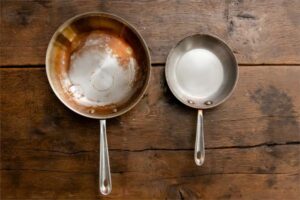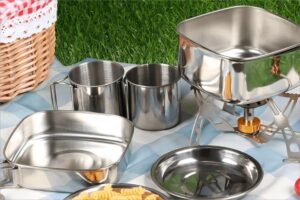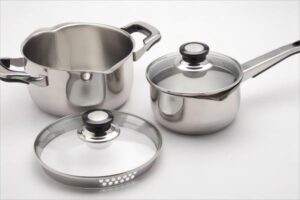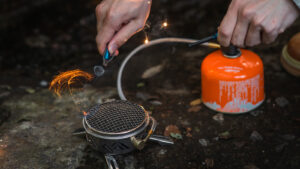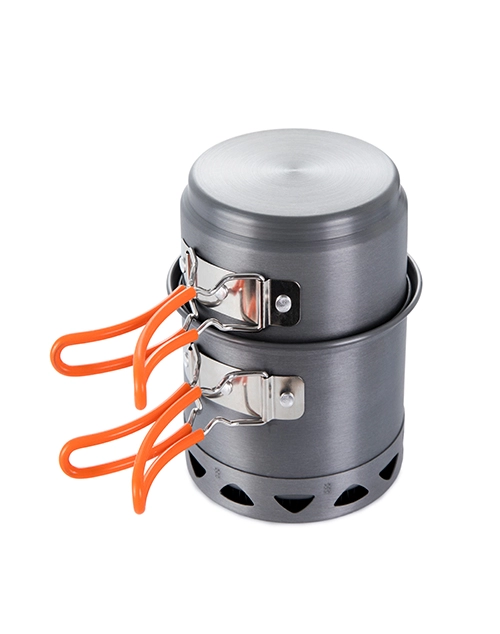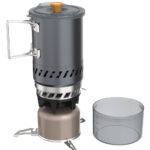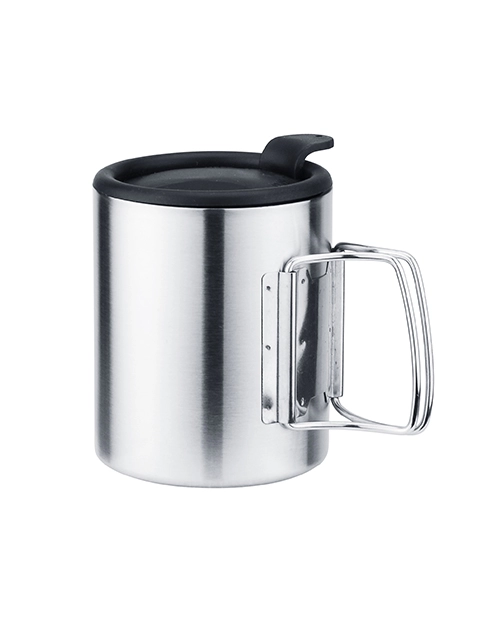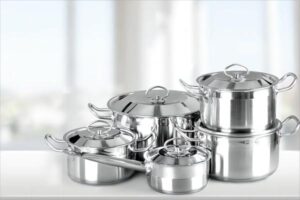
However, as durable as stainless-steel utensils are, it is critical to maintain them carefully in order to keep their quality. In this article, we will discuss how to clean stainless steel cutlery.
Why stainless-steel utensils are very popular?
Stainless steel utensils are extensively used in the kitchen since they are among the best cookware available. They are superior to other forms of cookware since they provide all of the benefits required for a better cooking experience. Stainless steel utensils are a superior option for cooking since they are constructed of non-toxic materials that are safe for human health and hygiene.
Stainless steel utensils are simple to use since they can withstand greater temperatures without causing harm to the cookware. They are particularly adaptive since they don’t change the flavor of the meal being cooked and hence assist in keeping the nutritious value of the food.
Different types of stains
Warm soapy water, a sponge or soft cotton cloth, and dishwashing gel or bar are required for routine cleaning of stainless-steel cutlery. All that is required is to remove the food residues from the utensil and then wash it with water and dishwashing gel or bar using a sponge or soft cotton towel.
-
Brown, rusty stains
Brown stains are one of the most common stains that harm stainless steel cutlery. These are often caused by frequent usage, overheating, and corrosion. There is a specific method for removing these dark stains. To remove these stains, put the utensil in boiling water with a few teaspoons of baking soda for a few hours. The period of time you soak the utensils will depend on the severity of the stains. The stainless-steel utensil would be stain-free after a few hours of soaking.
-
Calcium build-ups
Calcium deposits in the bottom of stainless-steel cutlery are another sort of harm that they are subjected to. When water is boiled in this stainless-steel cookware too frequently, calcium deposits form. The minerals and calcium in the water settle in the bottom of the utensil, leaving a discoloration.
To remove this calcium buildup, use one-third or one-fourth vinegar with three or four parts waters. The instrument should be thoroughly cleaned with soapy water.
-
Burnt stains
Another main cause of stains that may make a stainless-steel utensil appear dirty and old is burnt food. These occur when food is left unattended in the utensil for an extended period of time during cooking. It is also a difficult stain to remove. However, burned food stains may be removed from utensils using hot water.
To remove burned food from stainless steel cutlery, just immerse them in hot water until they cool to room temperature. The cutlery should next be washed in warm soapy water using cotton towels or a nylon scrubbing pad.
-
Watermarks
Any type of cookware that requires washing with water will develop watermarks on it, if not checked. Because stainless steel utensils have a highly shiny and tidy surface, they will exhibit these watermarks more than any other form of cookware. It is best not to keep stainless steel in water for an extended period of time to avoid watermarks. As a result, once the item has been washed, it is best to wipe it down with a dry and gentle cloth.
Method of Cleaning Stainless Steel Utensils
Stainless steel cutlery is essential in kitchens, valued for its durability, adaptability, and attractiveness. however, can diminish their brilliance and create unsightly stains and imperfections. Properly cleaning these utensils not only restores their brilliance but also maintains the purity of your meals.
Rinsing Stage
To begin, clean your stainless-steel cutlery to eliminate any leftover food. After that, half-fill a sink or basin with warm water and add a few drops of mild dish soap. Allow your utensils to soak for a few minutes in this soapy solution. This initial step helps in the removal of tenacious food remnants, making the subsequent cleaning procedure easier.
Scrubbing
After a brief soak, gently wipe the utensil’s surface with a light microfiber cloth or a sponge. To remove tough stains or spots, use a soft-bristle brush. Scratching the stainless-steel surface with abrasive cleaning pads is not recommended. Pay careful attention to any portions of your kitchenware that have intricate patterns or carvings.
Using Baking Soda Magic
When it comes to eliminating stubborn stains or spots, baking soda might come in handy. To produce a paste, combine baking soda and a tiny amount of water. Apply the paste to the affected regions and rub it in a circular motion. The mild abrasive qualities of baking soda will assist in removing stains without harming the stainless steel. After that, rinse well to complete this procedure.
Use White Vinegar
It’s time to bring out the white vinegar and polish your stainless-steel utensils. Soak a soft cloth or sponge in white vinegar and gently polish the cookware (if visible) in following the grain. White vinegar not only helps in the removal of any remaining stains, but it also functions as a natural disinfectant. After that, rinse the utensils well with warm water to eliminate any vinegar residue.
Prevent Water Spots
To avoid water stains, immediately dry your utensils after cleaning them. Wipe with a clean, dry microfiber cloth in the direction of the grain. This method will keep your stainless-steel cutlery pristine.
Oil Polish
Consider using a tiny amount of olive oil or mineral oil to polish and preserve your silverware. With a soft, lint-free cloth, massage the oil in a circular motion. This approach not only provides an appealing shine, but it also acts as a barrier against stains. Wipe away any extra oil to prevent leaving an oily residue.
Conclusion
Cleaning is an essential task when it comes to cookware, no matter what material it is made of. It is crucial to keep them clean and attractive at all times for health and hygiene reasons. Otherwise, the stains and deposits may include germs that get up in the foods we eat. This can be dangerous to our health; thus, it is imperative that you use these easy methods to restore the shine to your stainless-steel cutlery.
ODM service
Looking for reliable utensils supplier? At Deermaple, we specialize in ODM service, offering high-quality and innovative gear tailored to your needs.
If you are interested in outdoor gear wholesale, please contact us.

